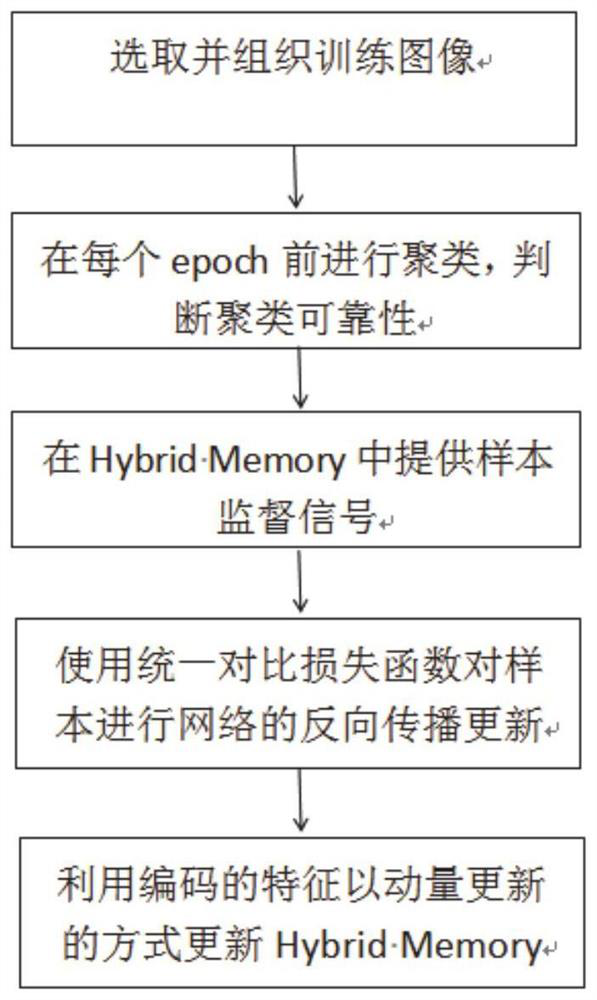Pedestrian re-identification method and system based on mixed supervision
A pedestrian re-identification and pedestrian technology, applied in the field of computer vision, can solve difficult and unconsidered problems, and achieve the effect of reducing the impact of pseudo-label noise, reliable learning goals, and speeding up the feature learning process.
- Summary
- Abstract
- Description
- Claims
- Application Information
AI Technical Summary
Problems solved by technology
Method used
Image
Examples
Embodiment 1
[0040] Such as figure 1 As shown, this embodiment provides a method for pedestrian re-identification based on hybrid supervision, including the following:
[0041] 1. Select and organize training images:
[0042] In this embodiment, two kinds of training images are used, one is a single-camera-labeled pedestrian image, and the other is an unlabeled pedestrian image; wherein, for the selection of a single-camera-labeled pedestrian image, specifically, randomly select a camera for each person , and the image under the selected camera is used as the training image; for the training sample X of the unlabeled pedestrian image t , using the self-step clustering strategy to divide the samples into clusters and cluster outliers; the entire training set is divided into, and the labeled samples under a single camera are X s , unlabeled cluster samples and cluster outlier samples three parts;
[0043] Preferably, during training, each mini-batch contains 64 single-camera annotat...
Embodiment 2
[0069] This embodiment provides a pedestrian re-identification system based on hybrid supervision, including: a sample building module, a clustering module, a training module and a dynamic updating module;
[0070] The sample building module is configured to: select a single camera to mark pedestrian images and unlabeled pedestrian images as training image samples;
[0071] The clustering module is configured to: cluster the unlabeled pedestrian images, segment them into clustered pedestrian images and non-clustered outliers, and judge the clustering reliability;
[0072] The training module is configured to: provide supervision signals of single-camera labeled pedestrian images, unlabeled clustered pedestrian images, and non-clustered outliers, and jointly train the supervisory signal and the encoder;
[0073] The dynamic update module is configured to: dynamically update single-camera annotated pedestrian images, unlabeled clustered pedestrian images, and supervision signals...
Embodiment 3
[0075] This embodiment provides an electronic device, including a memory, a processor, and a computer program stored on the memory and operable on the processor. When the processor executes the program, the hybrid supervision based on Embodiment 1 is implemented. person re-identification method.
PUM
 Login to View More
Login to View More Abstract
Description
Claims
Application Information
 Login to View More
Login to View More - R&D
- Intellectual Property
- Life Sciences
- Materials
- Tech Scout
- Unparalleled Data Quality
- Higher Quality Content
- 60% Fewer Hallucinations
Browse by: Latest US Patents, China's latest patents, Technical Efficacy Thesaurus, Application Domain, Technology Topic, Popular Technical Reports.
© 2025 PatSnap. All rights reserved.Legal|Privacy policy|Modern Slavery Act Transparency Statement|Sitemap|About US| Contact US: help@patsnap.com



